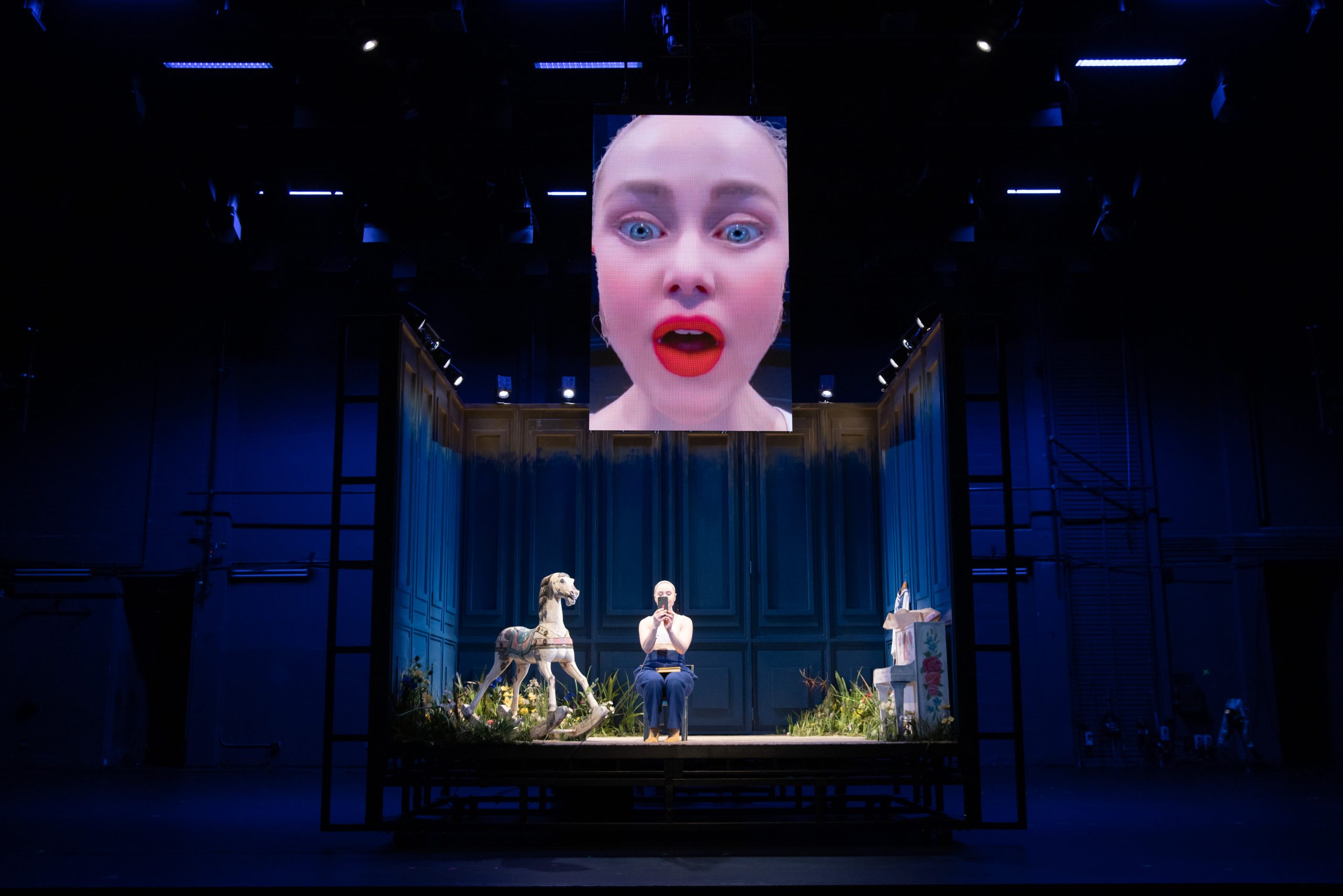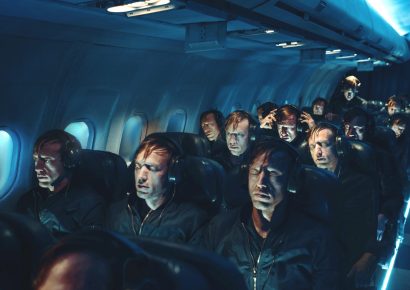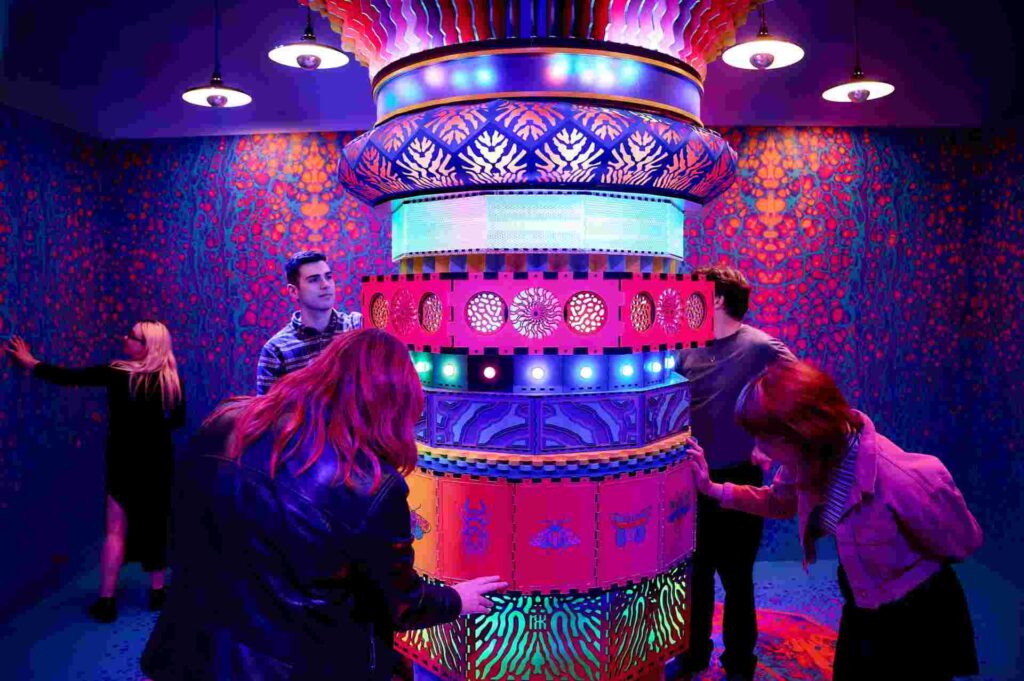“There is only one thing in the world that’s worse than being talked about, and that is not being talked about.”
Brilliantly adapted into a mesmerising and unforgettable one woman show, The Picture of Dorian Gray follows a man who becomes locked into a Faustian deal with the devil to preserve his own youth and beauty. Currently sold out across all shows on its Melbourne run that ends August 7, the production has been receiving countless five star reviews and standing ovations at the conclusion of each night. It’s no surprise then, that Kip Williams’ critically-acclaimed adaptation of Wilde’s 19th Century parable has been selected to be performed to audiences on Broadway, The West End and beyond.
Check out Melbourne’s latest stage shows and theatrical events here.
Eryn-Jean Norvill takes to the stage to play all 26 of the novel’s characters in a Herculean feat of performance, shifting and transforming before our eyes into each person through change in significant props, mobile editing apps and full-blown costume switches. Interacting with a blend of live and pre-recorded footage, the digital and theatrical spheres seamlessly merge together in an unforgettable display of modern stagecraft.
An insanely ambitious and intricate blend of the theatrical and cinematic, the work devised by the Sydney Theatre Company (STC) was performed first in 2020 before the pandemic flung us all into a terminally online world. After the last two, long and bleak years where the only way that people could perceive you was through your heavily curated digital persona, The Picture of Dorian Gray re-emerged back onto Australian stages more pithy and relevant to audiences than ever before.
By placing Dorian Gray directly against the backdrop of our modern era, where social media is an all-consuming obsession of our contemporary society, Wilde’s 19th Century parable about the traps and pitfalls of excessive narcism is transformed with a whole new relevance and importance.
The beauty of Wilde’s original text is in its timelessness; originally a Victorian re-working of the Greek myth of Narcissus, STC have highlighted The Picture of Dorian Gray’s parallels to contemporary society perfectly in their adaptation. Kip Williams has made the story more relevant than ever before through the use of mobile software and filters – all software that appears on our phones.
As in modern times and all the eras of mankind that have come before, youth and beauty were both traits that were highly valued in Oscar Wilde’s Victorian society. When the young and innocent Dorian lays eyes upon his portrait for the first time, “the sense of his own beauty came on him like a revelation” – much like Narcissus doomed to love his own reflection until death, Dorian Gray falls into a similar, all-encompassing trap of fate.
In their reframing of The Picture of Dorian Gray as a one-woman performance, Eryn-Jean Norvill and Kip Williams have traded away the text’s prevailing undertones of homoeroticism in order to bolster the themes of narcissism. It’s an ingenious choice for a text in which Oscar Wilde admittedly wrote his likeness into every character, once having declared that “Basil Hallward is what I think I am: Lord Henry is what the world think me: Dorian is what I would like to be – in another life perhaps.”
The corrupting influence of Lord Henry’s obsession of youth, beauty, wit and intelligence predates the social media era, but his values remain relevant all the way into it. Much like accruing followers on social media for the aesthetic of popularity, Lord Henry is only interested in what people can bring to his life (“I make a great difference between people. I choose my friends for their good looks, my acquaintances for their good character and my enemies for their good intellects.”)
Dorian Gray’s friendship with the vain aristocrat throughout the play is marred with competitiveness and ruthless jealousy, paralleling the grip that social media has on us – after all, who hasn’t looked at our mates’ successes and sunny Europe trips posted to Instagram with green-eyed spite?
Framing Novill’s face, the screens that float across the stage are another kind of moving portraiture themselves; centring and magnifying the image of the show’s sole performer. The world of The Picture of Dorian Gray is one where cruelty is disbelieved, or at the very least questioned, because of outward appearances. Much like with carefully curated online presences, nothing matters beyond one’s looks, where a direct correlation is made between the assumption of a perfect external appearance and pure intentions:
“Mind you, I don’t believe these rumours at all. At least, I can’t believe them when I see you. Sin is a thing that writes itself across a man’s face. It cannot be concealed,” the artist Basil Hallward remarks upon seeing Dorian Gray, pure and unchanged through the years of excess and wanton sin.
“People talk sometimes of secret vices. There are no such things. If a wretched man has a vice, it shows itself in the lines of his mouth, the droop of his eyelids, the moulding of his hands even.”
View this post on Instagram
In his own way, Basil is right – unbeknownst to the artist, the portrait that he has painted of Dorian ages with every passing day and act of cruelty, it is just the painting’s subject that remains unchanged. Beauty and appearance are Dorian Gray’s only perceived worthwhile quality – demonstrably more powerful than the grotesque rumours that precede him. It is the promise of unchanging, eternal youth that allows him to delve into sin, as how you look is more important to the world than how you treat others.
Through extravagant and jaw-dropping costume and set changes, the STC’s adaptation of the novel indulges themes of decadence and excess – delighting in aesthetic gratification and satisfaction as much as the flowery language that characterises Oscar Wilde’s text does.
An ever relevant, tuned-in critique of our modern world that’s predominantly concerned with appearances, The Picture of Dorian Gray will be representing the absolute best of Australian theatre while abroad.
The Picture of Dorian Gray is heading to Broadway and beyond after its last curtain. Keep up to date with international shows by heading here.
Made in partnership with Michael Cassel Group







